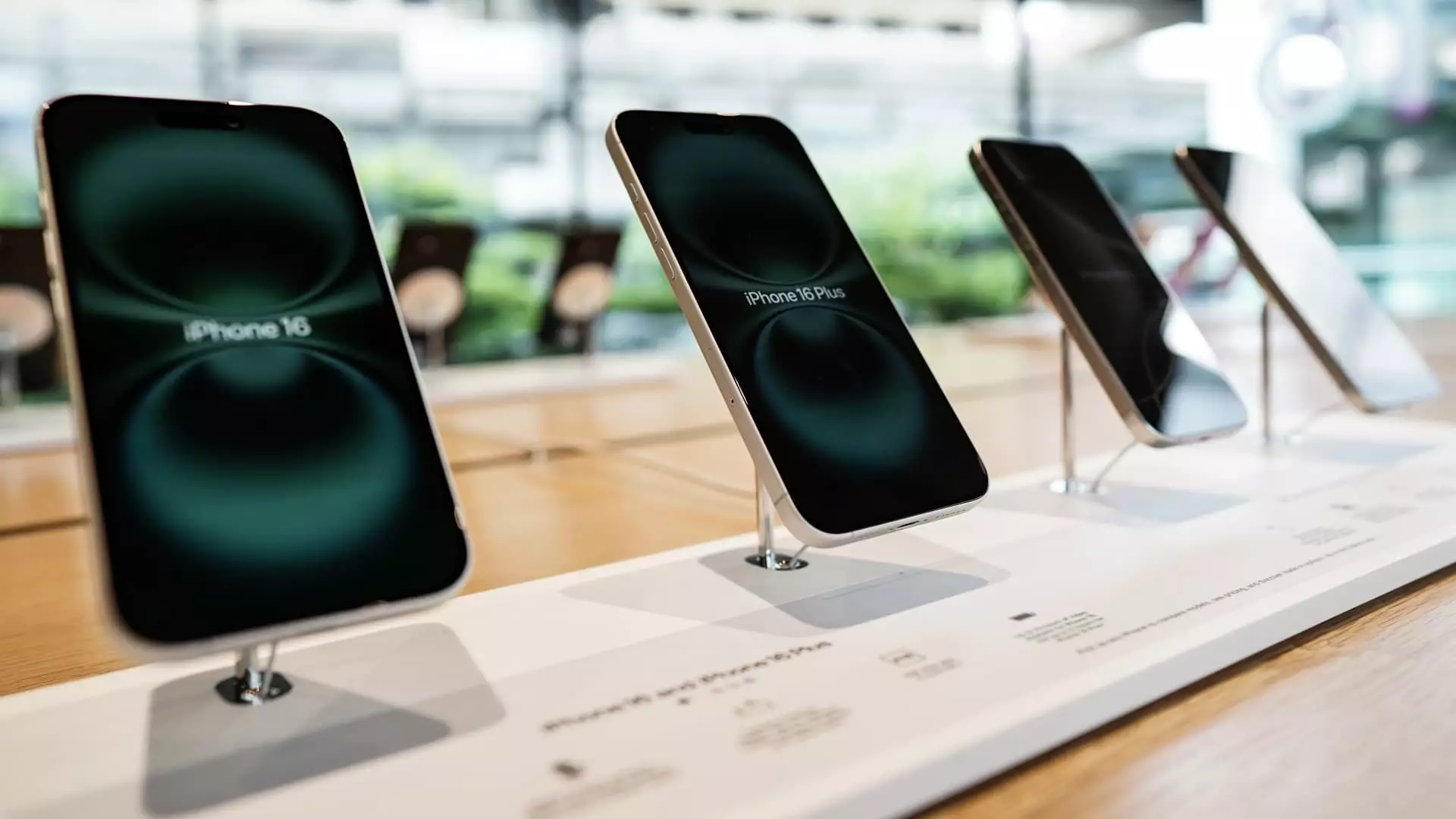In the evolving landscape of global commerce, few brands loom as large as Apple. With its iconic iPhones being a touchstone of modern technology, the company has found itself ensnared in the complexities of international trade—particularly concerning its production strategies in the shadow of Sino-U.S. tensions. Recently, Craig Moffett, a highly regarded analyst at MoffettNathanson, made waves with his outspoken skepticism regarding Apple’s ambition to pivot assembly lines from China to India. His memo strikes at the heart of economic realism and draws a stark portrait of the hurdles that lie ahead for Apple, revealing layers of complexity that the broader market may not fully appreciate.
The Tariff Tango: A Dance of Cost and Complexity
Moffett’s criticisms resonate within a central tenet of economic strategy: that merely relocating production does not resolve underlying cost issues—especially when the components are still manufactured in China. Essentially, Apple’s proposed migration to India is not a panacea but rather a potential band-aid that fails to address the wound. As Moffett notes, shifting assembly does not erase the complexities engendered by tariffs; it merely redistributes them, complicating an already intricate supply chain.
The reality is that tariffs create a complex web of challenges. Moffett highlights the dual nature of the global trade war, which impacts both costs and sales. In an age where consumer goods are keenly price-sensitive, not addressing the latter could lead to diminished market share. Apple may be attempting to preemptively strike back against rising costs, yet the efficacy of this approach remains uncertain.
Resistance to Change: The Burden of Established Systems
One must also consider the entrenched nature of Apple’s supply chains. Moffett argues that the inherent inertia within such well-established systems could incur significant resistance to change. India, while presenting opportunities, cannot instantaneously replicate the intricate and finely tuned operations that have been developed in China over decades. This leads to the question: can Apple genuinely pivot effectively without suffering reputational damage or operational inefficiencies?
Furthermore, the tech giant’s reliance on a Chinese manufacturing base is not merely a matter of logistical convenience; it is also embedded in a deeply interconnected essence of innovation and speed. The Chinese manufacturing ecosystem has evolved into a breeding ground for rapid technological advancement—something that shifting to India may fail to recapture immediately.
The Macro Economy: A Storm on the Horizon
Simultaneously, Moffett draws attention to the looming specter of a slowing macro economy and its implications for consumer demand. A general deceleration could stymie sales of luxury items, which typically include Apple’s offerings. The analyst underscores that economic sentiment plays a significant role; as consumers tighten their belts amidst economic uncertainty, products viewed as discretionary may see reduced demand, leading to a cascading negative impact on revenue.
It is critical to note that these pressures extend beyond mere tariff implications. Increased pricing due to tariffs has the potential to erode consumer loyalty and inhibit purchasing behavior. As Moffett aptly points out, if major carriers like AT&T and Verizon refuse to bear the costs of increased tariffs on handsets, the end consumer will inevitably face the brunt of these hikes. This decision could catalyze a troubling trend of demand destruction, dissuading users from upgrading their devices—an unsettling premise for a company built upon a franchise known for frequent upgrades.
Competition and the Chinese Backlash
In a climate of burgeoning nationalism, it’s crucial to consider Apple’s market presence in China—an aspect that Moffett highlights acutely. With the U.S. and China in economic duress, the potential backlash against American companies could further jeopardize Apple’s position in this lucrative market. Chinese alternatives like Huawei and Vivo are gaining ground, aggressively capturing consumer interest that may traditionally have gravitated toward Apple products.
This competitive distortion is not just a concern of market share; it’s symptomatic of a broader narrative defining the future of technology. As nationalism becomes intertwined with consumer choice, Apple could find itself at a critical junction, faced with intensifying competition not only from local rivals but also from a shifting consumer mindset pivoting towards nationalist brands.
Valuation Woes: Beyond A Great Company
Moffett’s analysis also reverberates with skepticism regarding Apple’s valuation. Despite recognizing the company’s robust balance sheet and influential consumer loyalty, he expresses concern that these aspects may not suffice to strengthen Apple’s stock in today’s market. Valuation bemoans the reality that even a great company can be trapped in an unfavorable economic cycle, underscoring that a sound business model cannot alone shield Apple from the vicissitudes of economic reality.
In this landscape, we find ourselves questioning not merely the operational strategy but the very foundations of market positioning. Apple’s aspirations of diversifying manufacturing risks falling prey to a volatility driven by economics that the company cannot wholly control. Moffett’s assessments capture a crucial truth: shifting assembly to India, while a consideration, might nudge Apple into a complex labyrinth rather than a straightforward path to cost savings.

